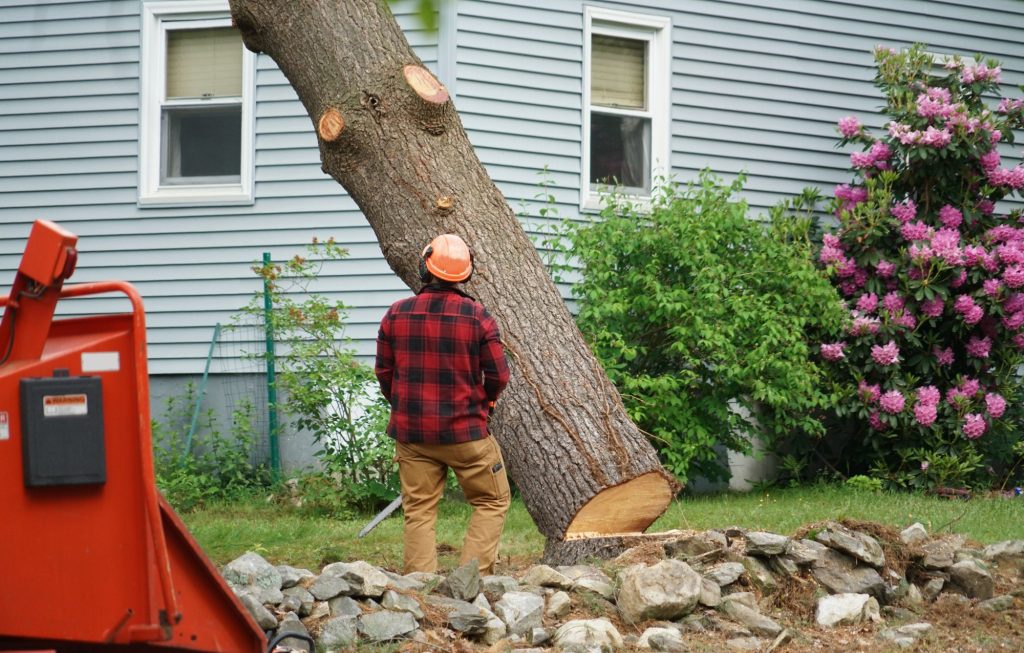Table of Contents
- Introduction to Tree Health and Maintenance
- Visible Damage to the Tree
- Unusual Tree Growth Patterns
- Fungal Growth or Infestation
- Dead or Falling Branches
- Changes in Leaf Coloration
- Root Problems
- Tree Overcrowding
- Conclusion
Introduction to Tree Health and Maintenance
Maintaining the health of your trees is crucial for the safety and appearance of your property. Trees can suffer from issues that are only sometimes obvious at first glance. Recognizing the signs that you need a Sanford tree service can prevent damage and prolong their life.
Trees offer various advantages, including shading, improving air quality, and creating homes for wildlife. Nevertheless, these advantages can become risks if trees are not correctly cared for. Hence, it is crucial to understand when to contact experts for tree maintenance to guarantee the safety and health of your trees. Routine tree care can enhance the value of your property and protect the existing natural surroundings.
Visible Damage to the Tree
Visible damage is one of the most apparent signs that you need a tree service. Large cracks in the trunk, branches that hang precariously, or sections of the tree that have no leaves during the growing season are red flags. These signs often indicate structural issues, which can be exacerbated during heavy storms or wind. Ignoring these signs can lead to branches falling and causing harm or damage to property. Routine inspections can assist in detecting these problems at an early stage.
Unusual Tree Growth Patterns
If a tree starts growing unevenly or displays unusual growth patterns, it could signal underlying problems. For instance, extensive leaning or branches growing in irregular directions can indicate internal damage or disease. Trees that grow toward structures or power lines pose risks that should be addressed promptly. These unusual growth patterns might also suggest that the tree struggles to find light, indicating poor overall health. Early intervention can help manage these risks before they become more severe.
Fungal Growth or Infestation
Another red flag is the appearance of mushrooms, fungi, or other forms of infestation on the trunk or branches. This often means the tree is decaying internally. Fungal growth is usually a sign of root rot or compromised structural integrity. The presence of insects such as beetles or borers can also signify that your tree is in trouble. Professional assessment is crucial in these scenarios to determine the best action.
Dead or Falling Branches
Dead branches are not just unsightly; they pose significant risks to people and property. If you notice limbs that are brittle or start falling off, it’s time to consider calling in professional help. Removing deadwood mitigates safety risks and promotes new growth by allowing more sun and air to penetrate the tree canopy. Ensuring your trees are free from dead branches can also prevent diseases from spreading, contributing to the overall health of your landscape.
Changes in Leaf Coloration
Leaves that are off-color, wilted, or falling off prematurely can indicate various ailments. These symptoms might range from nutrient deficiencies to severe diseases. Diagnosing these problems early can make a significant difference. By identifying the cause of these changes, whether it’s pest infestation or environmental stress, targeted treatments can be applied to restore your tree’s wellbeing.
Root Problems
The roots of a tree can give plenty of clues about its health. If you notice roots surfacing above the ground or damage due to construction, this could destabilize the tree, requiring immediate attention. Healthy roots are critical for nutrient uptake and overall stability. Compromised roots can often lead to tree failure during extreme weather conditions. Addressing root issues usually involves a combination of soil management, root pruning, and protective measures to ensure the longevity of your trees.
Tree Overcrowding
Trees may sometimes experience overcrowding as they vie for sunlight, water, and nutrients. This could result in inhibited growth and higher susceptibility to pests and diseases. Thinning out trees strategically is an intelligent way to ensure they grow healthier. Proper pruning and spacing help improve air circulation and reduce the likelihood of disease spread. Additionally, managing overcrowded trees also helps ensure that each tree has enough space to develop a strong and stable root system, which is crucial for long-term health.
Conclusion
Trees are integral to our environment, providing numerous benefits. However, they require regular maintenance and attention. Identifying the signs that a tree service is needed can prevent hazards and save trees from irreversible damage. By staying attentive to these signs, you can enjoy your trees’ robust health and beauty for many years. Regular consultations with tree experts can help diagnose underlying issues and offer solutions that will keep your trees thriving. Investing in professional tree care not only ensures the safety and aesthetics of your property but also contributes to the overall health of your local ecosystem.










